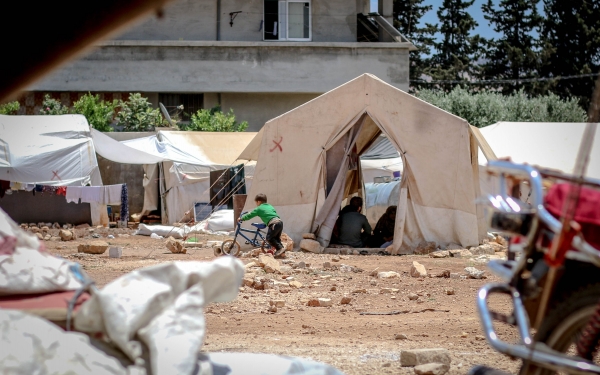Oxfam International's December 2020 report highlights the risks faced by civilians in the Taiz Governorate as a result of six years of conflict. Oxfam is a global movement that works to adopt protection programs for populations affected by wars and humanitarian crises. In Yemen, these programs follow a community-based approach and are structured as Community-Based Protection Networks (CBPNs), with the aim of ensuring a sustainable level of protection. The report presented here consists of a series of focus group discussions (FGDs) with members of the CBPNs, a total of 18 internally displaced persons (IDPs) and host communities.
The Taiz Governorate, and particularly its capital, the city of Taiz, is the theatre of clashes between the internationally recognized government, supported by the United Arab Emirates (UAE) and the Saudis, and Ansar Allah forces. The capital, host to around 11.3% of the entire Yemeni population, has witnessed the most violent fighting the country has ever seen. Since 2015, there has been an escalation of the conflict, as evidenced by the civilian casualties between 2015 and 2019. According to Oxfam International, 2,300 civilians lost their lives in the Taiz governorate alone, around 19% of the total 12,000 civilian deaths in the country.
What emerges from the report is a worrying humanitarian situation, not only because of the direct damage caused by bombings, landmines and air strikes, but also because of the indirect consequences, such as the shortage of subsistence resources, gender-based violence, and compromised access to essential services, including medical care and educational facilities. In addition, the difficulties in entering and exiting the city of Taiz, which is currently in a state of quasi-siege, have undermined the ability of humanitarian organizations to provide support to the affected communities, further damaging the living conditions of civilians in accessing basic services.
The COVID-19 pandemic is worsening the crisis in the country. According to official estimates, the Taiz Governorate has the second highest number of suspected cases of COVID-19 in the country. Despite the large number of people requiring medical care, health structures are not able to cope with this threat, due to the lack of the necessary medical equipment. Furthermore, the isolation measures adopted by the authorities are devastating the lives of many people, whose livelihood depends on their ability to carry out their daily work.
Almost four million people have fled their homes since the beginning of the conflict and have taken refuge in the territories surrounding the Governorate of Taiz. However, despite facing fewer security threats posed by the fighting, these areas are still not safe. Displacement is in itself a danger to physical security, personal well-being and family stability. Internally displaced persons (IDPs) are more exposed to vulnerabilities in the country. Indeed, the conflict has exacerbated Yemen's extreme poverty, with the fuel crisis and dramatic increase in food prices worsening the already precarious humanitarian conditions. The lack of assistance has particularly affected the lives of children, who are increasingly subjected to child labor and infant marriage in order to contribute to their families’ livelihoods.
According to the Oxfam report, a further reason for insecurity is the discrimination and stigmatization to which some communities, such as the Muhamasheen, are subjected. In particular, women are victims of gender-based violence and abuse, especially by armed men at checkpoints. As reported by CBPN members, the lack of an efficient legal system and marginalized status makes it even more complex for these women to be able to report the harassment they have suffered.
In 2018, a United Nations-mediated peace agreement, the Stockholm Agreement, was signed by the parties to the conflict, which was supposed to be a first step towards a more lasting peace process. However, two years after the negotiations, the Agreement has only been partially adopted and to date there still seems to be no real prospect of peace. This report suggests that the international community should increase its intervention in Yemen in order to promote a ceasefire and push for a lasting and inclusive peace process that ends one of the worst humanitarian crises of our time.
To know more, please read:
https://reliefweb.int/sites/reliefweb.int/files/resources/bn-crisis-taiz-yemen-211220-en.pdf
Author: Francesca Mencuccini; Editor: Carla Leonetti







